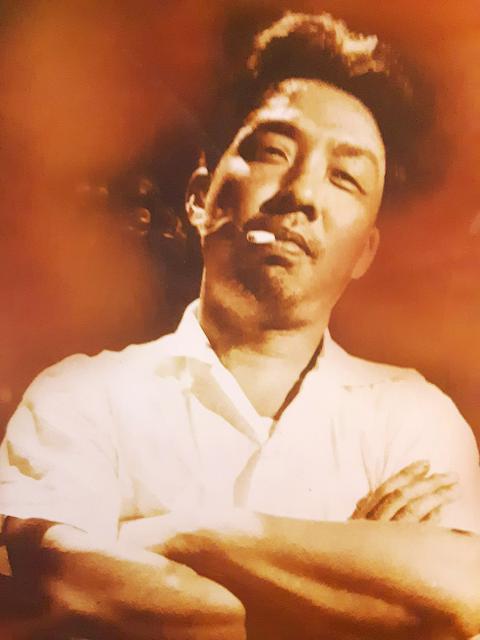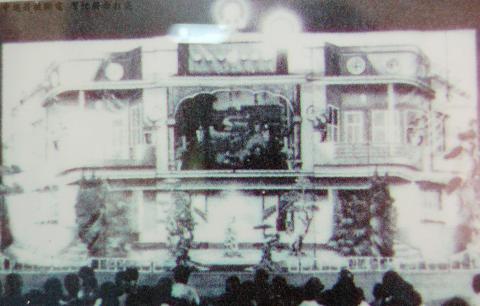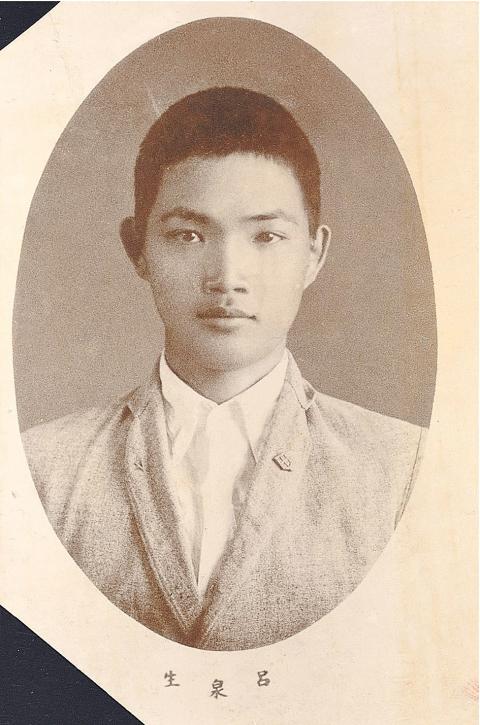Sept. 2 to Sept. 8
When the choir started singing Diu Diu Deng (丟丟銅仔), the ecstatic Taiwanese audience clapped, danced and sang along to the traditional folk song they had missed so much.
It was a bold decision by the Housheng Drama Research Group (厚生演劇研究會) to include the tune in its play, Castrated Chicken (閹雞). This was Sept. 2, 1943, a time when the Kominka Movement was in full swing as the Japanese colonial authorities sought to assimilate the Taiwanese and suppress their culture.

Photo courtesy of Tainaner Ensemble
Although the costumes, setting and music were distinctly Taiwanese, the theater troupe followed the rules by having the actors speak only Japanese. The addition of two Hoklo (also known as Taiwanese) folk songs delighted the audience, who pleaded for the show to go on despite a brief blackout, using flashlights to illuminate the stage.
“Folk songs are the voice of the people,” writes Lu Chuan-sheng (呂泉生), who scored the production. “The Japanese had suppressed all Taiwanese songs, and when they suddenly heard the sounds that were so dear to them, they were so moved that their hearts exploded.”
The authorities were not happy, summoning Housheng’s leader Wang Ching-chuan (王井泉) to the police station for a chat.

Photo courtesy of National Central Library
“They don’t want us to sing, so be it,” Wang reportedly said. “One day, we will be able to sing our hearts out!”
The play was allowed to continue the next day with Japanese songs, but the government shut down the theater group at the end of the year before it could put on the second half of Castrated Chicken.
CENTRAL FIGURES

Photo courtesy of Ministry of Culture
During the early days of Japanese colonization, the government let Taiwanese publish their own literature and stage their own plays, many of which promoted Han Chinese nationalism and anti-colonial ideals. This all came to an end in 1937 when the colonial masters launched the Kominka Movement.
Despite the oppressive environment, writer Chang Wen-huan (張文環) launched in 1941 Taiwan Literature (台灣文學), a magazine that sought to counter the Japanese-run publication Literary Taiwan (文藝台灣) that promoted Kominka ideals. The government banned one issue for “only writing about ordinary people, local culture, rural affairs and daily life, contributing nothing to the war effort.” The magazine was allowed to continue if it included one or two pro-war pieces in each issue.
Chang’s novella, Castrated Chicken, appeared in Taiwan Literature in July 1942, telling a tragic love story set in 1920s rural Taiwan. It was critical of capitalism, patriarchy and colonialism.

Photo courtesy of Open Museum
A few months later, a 23-year-old Lin Tuan-chiu (林摶秋) made the headlines in Tokyo by becoming the first Taiwanese playwright to have his work shown in Japan. The production, Okusansha, was set in a remote Aboriginal village.
Due to a labor shortage as Japanese men were sent to war, Lin had the opportunity to work at Toho, a film production company that would later be known for creating Godzilla in 1954. In early 1943, Lin returned home to visit family before heading to Japanese-occupied Manchuria for his job.
He immediately immersed himself in the cultural scene and directed the play Alishan (阿里山), which was so well-received that the cultural authorities ordered him to stay.
Shih Wan-shun (石婉舜) writes in Study of the 1943 Housheng Drama Research Group Taiwan (1943年台灣的厚生演劇研究會) that if Lin was the brains of Housheng, Wang was the heart. Wang was a restaurateur who was an avid supporter of the arts, which was used as the main vehicle for passive anti-colonial resistance. His banquet hall, Shanshuiting (山水亭), was a gathering place for all sorts of cultural figures, and he also served as a core member of Taiwan Literature.
SUCCESS CUT SHORT
One afternoon, Lin, Chang, Wang, Lu and several others were at Shanshuiting, angrily discussing the government’s oppression after an unpleasant meeting with the cultural authorities. Wang mentioned that despite Kominka in Taiwan, the Japanese were promoting local culture in their occupied areas across Asia to combat Western influence.
Someone suggested that they stage Castrated Chicken to symbolize the castration of Taiwanese by the colonial government. Lin agreed to adapt the play, and that night the Housheng Drama Research Group was born.
Housheng was the Chinese translation of the Japanese term kousei, which was used by the government to promote healthy leisure activities. It was a popular name for various groups and activities during that time, and seemed innocuous enough.
The group held its first meeting at Wang’s banquet hall on April 29, 1943, with 35 members present. Noted painter Yang San-lang (楊三郎) joined the team as set designer, and the group staged their first production at the Eiraku Theater, the second-largest venue in the Dadaocheng area.
After preparing for five months, the young Thespians put on four plays with Castrated Chicken as the centerpiece, drawing an estimated 10,000 spectators over six days. Two more shows were added due to popular demand.
Despite the brush with authorities, both Japanese and Taiwanese critics raved about the production, announcing “the dawn of Taiwan’s new theater movement.” However, others slammed it for violating government ideals.
As the war intensified, Japan only tightened its grip over Taiwan’s cultural scene. The government in December 1943 took direct control over all theater and literary groups, spelling the end for both Housheng and Taiwan Literature.
Taiwan in Time, a column about Taiwan’s history that is published every Sunday, spotlights important or interesting events around the nation that have anniversaries this week.

May 26 to June 1 When the Qing Dynasty first took control over many parts of Taiwan in 1684, it roughly continued the Kingdom of Tungning’s administrative borders (see below), setting up one prefecture and three counties. The actual area of control covered today’s Chiayi, Tainan and Kaohsiung. The administrative center was in Taiwan Prefecture, in today’s Tainan. But as Han settlement expanded and due to rebellions and other international incidents, the administrative units became more complex. By the time Taiwan became a province of the Qing in 1887, there were three prefectures, eleven counties, three subprefectures and one directly-administered prefecture, with

Taiwan Power Co (Taipower, 台電) and the New Taipei City Government in May last year agreed to allow the activation of a spent fuel storage facility for the Jinshan Nuclear Power Plant in Shihmen District (石門). The deal ended eleven years of legal wrangling. According to the Taipower announcement, the city government engaged in repeated delays, failing to approve water and soil conservation plans. Taipower said at the time that plans for another dry storage facility for the Guosheng Nuclear Power Plant in New Taipei City’s Wanli District (萬里) remained stuck in legal limbo. Later that year an agreement was reached

What does the Taiwan People’s Party (TPP) in the Huang Kuo-chang (黃國昌) era stand for? What sets it apart from their allies, the Chinese Nationalist Party (KMT)? With some shifts in tone and emphasis, the KMT’s stances have not changed significantly since the late 2000s and the era of former president Ma Ying-jeou (馬英九). The Democratic Progressive Party’s (DPP) current platform formed in the mid-2010s under the guidance of Tsai Ing-wen (蔡英文), and current President William Lai (賴清德) campaigned on continuity. Though their ideological stances may be a bit stale, they have the advantage of being broadly understood by the voters.

In a high-rise office building in Taipei’s government district, the primary agency for maintaining links to Thailand’s 108 Yunnan villages — which are home to a population of around 200,000 descendants of the Chinese Nationalist Party (KMT) armies stranded in Thailand following the Chinese Civil War — is the Overseas Community Affairs Council (OCAC). Established in China in 1926, the OCAC was born of a mandate to support Chinese education, culture and economic development in far flung Chinese diaspora communities, which, especially in southeast Asia, had underwritten the military insurgencies against the Qing Dynasty that led to the founding of